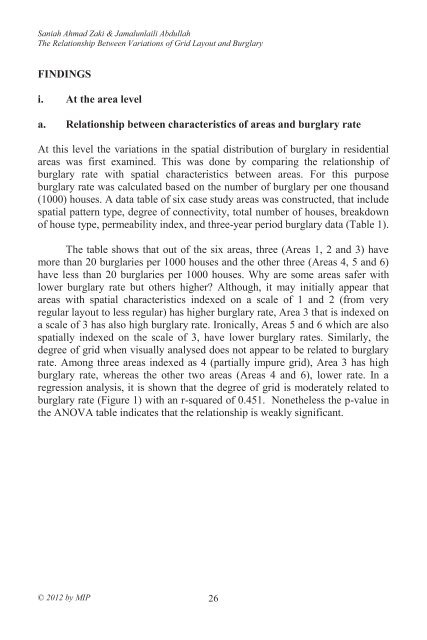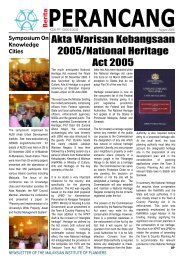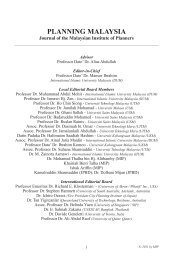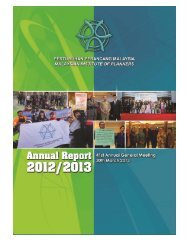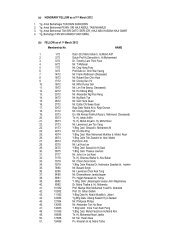Untitled - Malaysian Institute of Planners
Untitled - Malaysian Institute of Planners
Untitled - Malaysian Institute of Planners
You also want an ePaper? Increase the reach of your titles
YUMPU automatically turns print PDFs into web optimized ePapers that Google loves.
Saniah Ahmad Zaki & Jamalunlaili AbdullahThe Relationship Between Variations <strong>of</strong> Grid Layout and BurglaryFINDINGSi. At the area levela. Relationship between characteristics <strong>of</strong> areas and burglary rateAt this level the variations in the spatial distribution <strong>of</strong> burglary in residentialareas was first examined. This was done by comparing the relationship <strong>of</strong>burglary rate with spatial characteristics between areas. For this purposeburglary rate was calculated based on the number <strong>of</strong> burglary per one thousand(1000) houses. A data table <strong>of</strong> six case study areas was constructed, that includespatial pattern type, degree <strong>of</strong> connectivity, total number <strong>of</strong> houses, breakdown<strong>of</strong> house type, permeability index, and three-year period burglary data (Table 1).The table shows that out <strong>of</strong> the six areas, three (Areas 1, 2 and 3) havemore than 20 burglaries per 1000 houses and the other three (Areas 4, 5 and 6)have less than 20 burglaries per 1000 houses. Why are some areas safer withlower burglary rate but others higher? Although, it may initially appear thatareas with spatial characteristics indexed on a scale <strong>of</strong> 1 and 2 (from veryregular layout to less regular) has higher burglary rate, Area 3 that is indexed ona scale <strong>of</strong> 3 has also high burglary rate. Ironically, Areas 5 and 6 which are alsospatially indexed on the scale <strong>of</strong> 3, have lower burglary rates. Similarly, thedegree <strong>of</strong> grid when visually analysed does not appear to be related to burglaryrate. Among three areas indexed as 4 (partially impure grid), Area 3 has highburglary rate, whereas the other two areas (Areas 4 and 6), lower rate. In aregression analysis, it is shown that the degree <strong>of</strong> grid is moderately related toburglary rate (Figure 1) with an r-squared <strong>of</strong> 0.451. Nonetheless the p-value inthe ANOVA table indicates that the relationship is weakly significant.© 2012 by MIP 26


